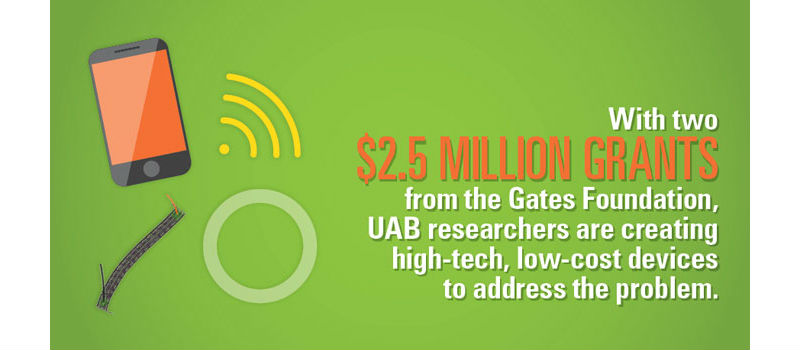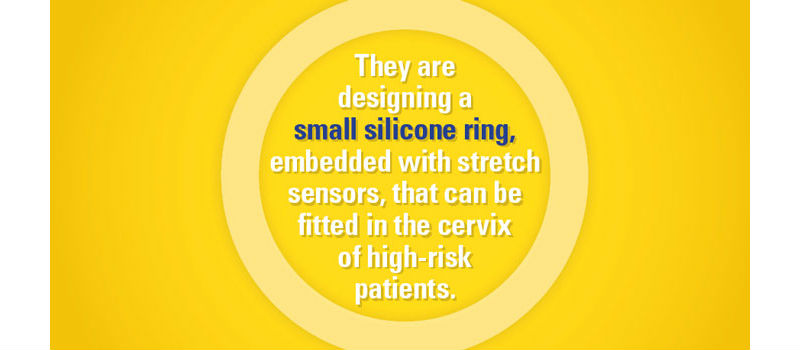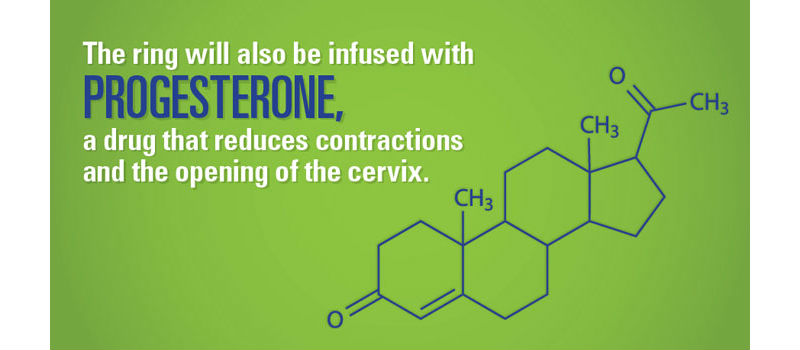Thanks to the iPhone, smartphones have flooded the globe. A side benefit of that domination are the rock-bottom prices on electronic sensors — the tech that lets a phone count your steps or taps on its screen.
A group of UAB researchers aims to harness these cheap sensors for a nobler mission than Candy Crush: saving the lives of some of the 15 million preterm babies born each year worldwide. Preterm birth — defined as a baby born before 37 weeks gestation — is the leading cause of death in children 5 and under. It was responsible for some 1 million deaths in 2013, according to the World Health Organization. And that number is rising, the WHO reports.

(All images credit: Laura Hannah, University of Alabama at Birmingham)
“Preterm labor is related to high morbidity, high mortality and significant cost,” said Rubin Pillay, M.D., Ph.D., assistant dean for global health innovation at the UAB School of Medicine and professor of health care innovation and entrepreneurship in the UAB Collat School of Business. “If we can develop a device that can predict when a patient is at risk for preterm labor, we can prevent it or act on it before it becomes an emergency. The reality now is that very often it’s too late. When the patient presents in the hospital, you can’t do anything about it.”

1. Sensing Stretching – Before It Goes Too Far
With a $2.5 million grant from the Bill & Melinda Gates Foundation’s All Children Thriving initiative, Pillay and an interdisciplinary group of researchers at UAB are applying low-cost stretch sensors to the problem. The sensors, embedded in a silicone ring, and synced to a nearby phone by WiFi, would be fitted into the cervix of high-risk patients in a simple procedure, Pillay explained. “Even 1 millimeter of dilation in the cervix means we need to act,” he said. “The stretch sensor can detect the slightest increase in diameter, and send a warning to the patient’s mobile phone.” That early warning would give patients time to get to the hospital well before birth, Pillay adds. The silicone ring, known as a pessary, will also be infused with progesterone, a drug that reduces contractions and the opening of the cervix.


2. All-in-One Monitoring
But Pillay is already thinking two moves ahead. The UAB team is also working on a sensor-filled patch, about the size of the ECG patches used to attach heart monitoring equipment. Attached unobtrusively to a pregnant woman’s stomach, their patch will measure uterine contractions and fetal heart rate. These two data points are crucial to monitoring a baby’s health in the womb, Pillay said. “The patch will sync to a doctor’s smartphone, and provide instant information,” he explained. “It will also have an analytic component, so it can predict which patients will run into problems, and alert the doctor.”

The next step would be to combine data from the pessary and patch into “one device to measure cervical dilation, fetal heart rate and contractions,” Pillay said. “A physician can have these on all her high-risk patients and monitor them from anywhere with a smartphone.”

3. New Test for Gestational Diabetes
The UAB team received a second $2.5 million Gates Foundation grant to find a biomarker for pregnancy-related diabetes, known as gestational diabetes. The condition increases the risk of birth injury, caesarean delivery and stillbirth, and brings lifelong negative health consequences for both mother and baby. It is currently diagnosed with glucose tolerance testing, an expensive and time-consuming process. UAB scientists are collaborating with clinicians and researchers at Sefako Makgatho Health Sciences University in South Africa on the project. They will recruit women at 20 to 28 weeks gestation, who will be screened with routine glucose tolerance testing. The researchers will then use metabolomics analyses to measure thousands of factors simultaneously in order to identify unique biomarkers of gestational diabetes, insulin resistance and hyperglycemia. The goal is to combine these biomarkers into a single, low-cost test that can be used throughout the developing world.
The projects involve researchers from the departments of Pharmacology and Toxicology and Obstetrics and Gynecology in the UAB School of Medicine, the Department of Computer and Information Sciences in the UAB College of Arts and Sciences, and the Department of Biomedical Engineering, a joint department of the School of Medicine and the UAB School of Engineering.
“This is cutting-edge stuff that’s never been done before,” Pillay said. The technology could well be spun off into devices that find a home in health-care settings in the developed and developing worlds, he adds. The UAB team expects to create intellectual property that could launch new businesses in Birmingham. “A big part of the future of health care is going to involve sensor-based technology, so I think this project will provide invaluable lessons and expertise for local scientists and researchers,” he said. “This project is going to help us build capacity locally.”




